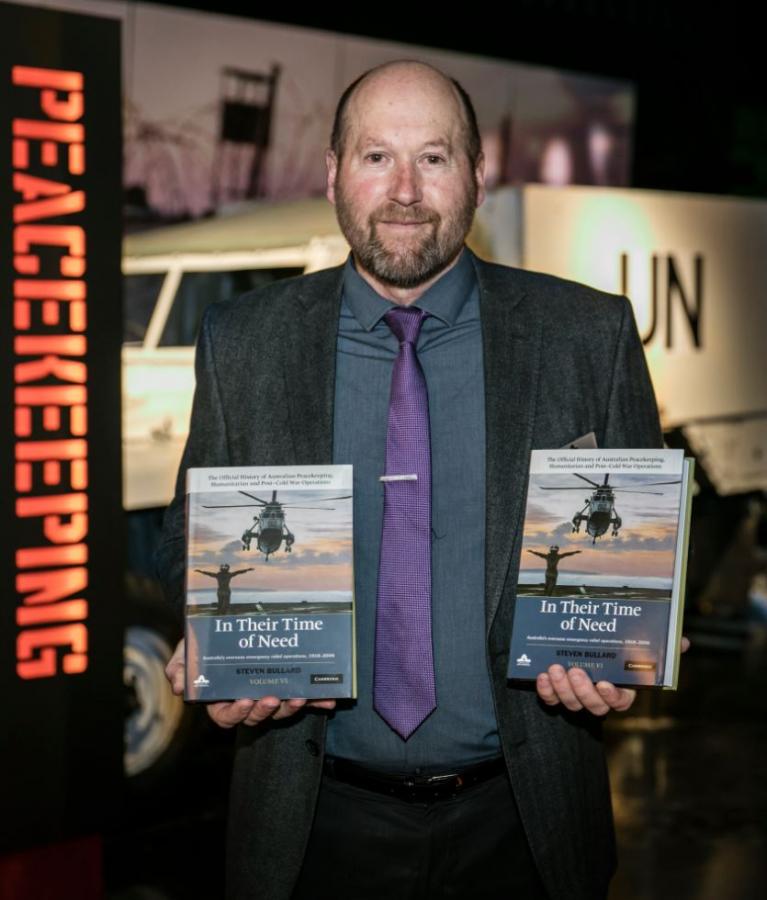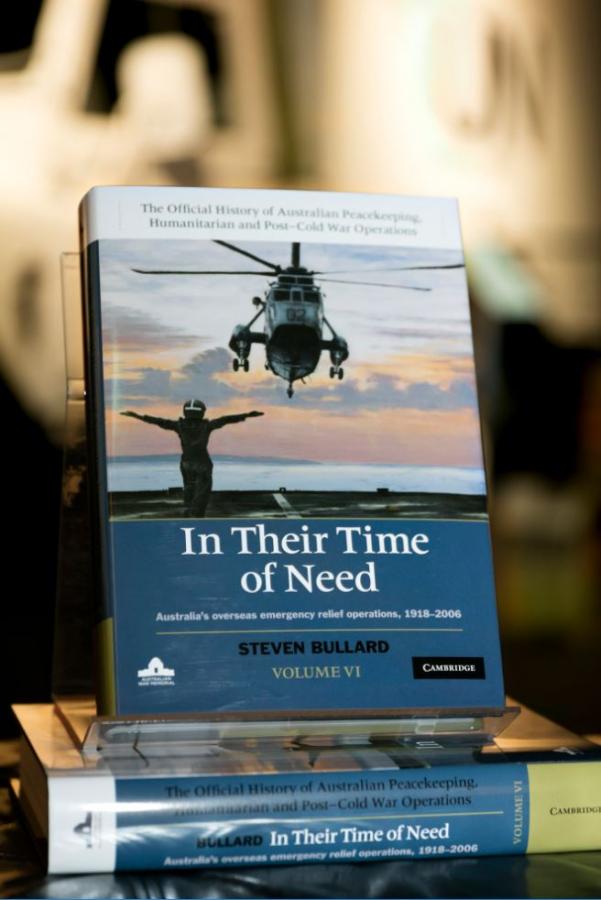Helping out in their time of need

It wasn’t until he was working on the official history of Australia’s peacekeeping and humanitarian operations that Memorial historian Dr Steven Bullard learned of his grandfather’s role in the country’s earliest disaster relief operation almost 100 years ago.
Dr Bullard knew his grandfather, Lance Bullard, had been a boy sailor during the First World War and had gone on to serve as a diver during the Second World War, but he never knew he’d been on the ship Australia sent to the Pacific islands after the outbreak of the Spanish influenza epidemic in November 1918.
It wasn’t until after Dr Bullard had written about the relief mission that he discovered the family connection when a relative asked about his grandfather’s service record and he came across the name of the ship, HMAS Encounter.
“A personal interest for me is that my grandfather was in the navy in the First World War and he was a crewman on that ship, on that mission,” Dr Bullard said. “He was also the navy diver who located the Japanese midget sub in Sydney Harbour [during the Second World War]. The sub is on display [at the Memorial], and he used to tell me stories about that, but I didn’t realise until I started this project that he was actually a crewman on that ship, the Encounter … I had no idea of his involvement in the first disaster relief mission that I later wrote about.”
The Spanish influenza epidemic killed an estimated 50 to 100 million people around the world, which was many times more than the military casualties from the war. “But they don’t really know the number,” Dr Bullard said. “So many people were dying, and records weren’t really being kept.”
The epidemic hit the Pacific islands of Samoa, Tonga and Fiji particularly hard, killing almost one quarter of the population of Samoa. Australia had instituted a quarantine regime and managed to stay free of the illness at first, but New Zealand was struggling with its own outbreak and asked if Australia would help the islanders. Australia agreed to send an army medical team of 45 personnel on the Australian navy ship, HMAS Encounter.
“It was fairly primitive,” Dr Bullard said. “They didn’t have a lot of treatments, apart from aspirin, and other treatments that aren’t in use any more.”
And because the relief mission travelled by ship, it took them over a week to get there.
“So in many ways, by the time they got there they were too late,” Dr Bullard said. “They were able to provide medicines and medical supplies and provide comfort and treatment to those who were recovering. But the main impact of the epidemic had passed, and those Pacific islands were some of the hardest hit areas in the world. In Samoa, for instance, almost a quarter of the population died from the flu outbreak. It was quite phenomenal the impact that it had, mainly because they didn’t have any resistance at all.”
Conditions on all the islands were basic at best, and getting transport was one of the many challenges the medical team and the crew faced. “One of the doctors had to use a row boat to go around from bay to bay around Fiji because there was no transport available, so he got a few locals to row him around,” Dr Bullard said. “Others used horse and buggies to get around, while one of them was taken around by a local on a yacht just to get to local communities.”
With the sheer scale of the outbreak and the overwhelming number of deaths, Dr Bullard said the relief operation must have been fairly harrowing for those involved.
“They must have been thinking, ‘We might get it as well’,” Dr Bullard said. “But, for whatever reason they didn’t, and they thought that was because of the precautions they took … But even so, the Encounter crew and the medical team were, I think, a little bit lucky in a way not to have anyone catch influenza.
“When they returned to Australia there was a quarantine period, and one of the crew members came down with a really bad case of a sore throat and the ship’s doctor said it wasn’t flu, but the quarantine medical officer said it was, so the ship had to stay an extra seven days after that, so they were really annoyed because it meant they’d missed Christmas when they first came home.”
The story of the Encounter and its crew is just one of 66 operations covered in Dr Bullard’s new book, In their time of need: Australia’s overseas emergency relief operations 1918–2006, the sixth volume of the Official History of Peacekeeping, Humanitarian and Post-Cold War Operations.
“These stories aren’t well known at all,” Dr Bullard said of the operations covered in the book. “We didn’t even know how many there were when we started [10 years ago]. At that time we had no idea of the extent of Australia’s overseas disaster relief operations and it turned out it was much greater than we actually thought.”
After the Encounter mission, it wasn’t until the 1960s and 1970s that Australia really started doing these types of disaster relief operations again, or until the 1980s and 1990s that they became much more common. But by the time of the 2004 Boxing Day tsunami, Australia was one of the first countries to respond to requests for help, and the defence forces already had a long history of providing humanitarian assistance and responding to calls for help after cyclones, earthquakes, tsunamis, volcanic eruptions, flood and droughts.
“There hasn’t been a study of this kind before,” Dr Bullard said of the monumental task of researching and writing the official history.
“It really has slipped under the radar. The fact that a lot of these records were thrown away or destroyed is indicative of the fact that in the early days this was seen as a bit of a sideshow, a bit of a distraction from what the military was supposed to be doing. But certainly by the turn of the 21st century, it was considered an integral part of the ADF’s mission and their role in national security. The context of overseas disaster relief needs to be told to fill in that link in our understanding.
“Writing this book has been a tremendously rewarding experience. Reading about disasters in our region and the personal and official accounts of the subsequent relief operations, often in some of the world’s most underdeveloped countries, has given me a new appreciation of the strength and resilience of the human spirit.”
